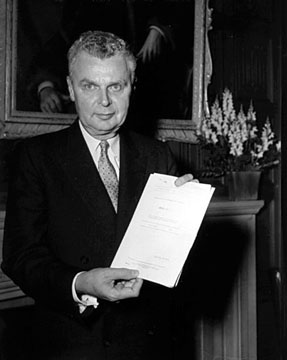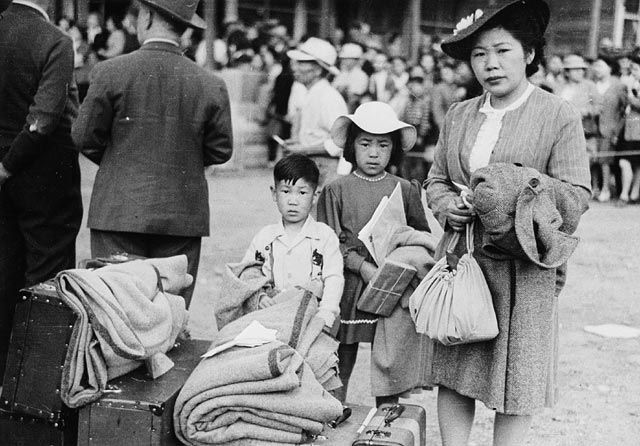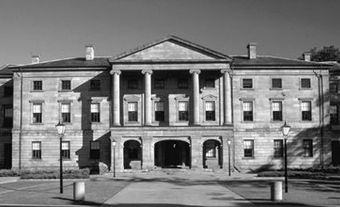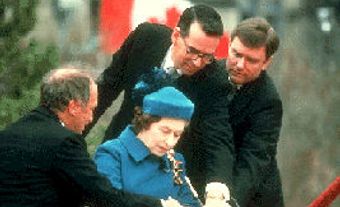The Canadian Bill of Rights was the country’s first federal law to protect human rights and freedoms. It was groundbreaking when it was passed in 1960. But it proved too limited and ineffective. It applies only to federal statutes and not provincial ones. This is because the Bill did not receive provincial consent. The Bill is still in effect. But it was overridden by the Charter of Rights and Freedoms in 1982. Unlike the Charter, the Bill of Rights is not part of the Constitution.
This article is a plain-language summary of the Canadian Bill of Rights. If you are interested in reading about this topic in more depth, please see our full-length entry, Canadian Bill of Rights.

Background: Civil Liberties in Canada
At the start of the First World War, the federal government passed the War Measures Act. It gave sweeping powers to Cabinet. The government could arrest, detain and deport people without charges or trials. The Act allowed the government to intern more than 8,500 people during the war.
In 1932, the civil liberties subcommittee of the Canadian Bar Association asked that key rights be added to Canada’s Constitution. This did not lead directly to changes. But it did inspire other advances.
During the Second World War, the War Measures Act was invoked again. As many as 24,000 people were interned. This included some 12,000 Japanese Canadians. In 1946, Ottawa again suspended civil liberties during the Gouzenko Affair.
In 1944, Ontario passed the Racial Discrimination Act. In 1947, Saskatchewan passed the Acts to Protect Certain Civil Rights. It was the first bill of rights in Canada.
Between 1948 and 1950, Parliamentary committees looked into a national bill of rights three times. They rejected it each time.

United Nations Declaration of Human Rights
In 1948, the United Nations created its Universal Declaration of Human Rights. It said that every person is entitled to rights and freedoms. They cannot be excluded on grounds of race, colour, sex, language, religion, political beliefs or place of birth.
John Humphrey was director of the UN’s division on human rights. He and his team created the declaration with Eleanor Roosevelt. Canada and most other UN members adopted the declaration in December 1948.

John Diefenbaker
John Diefenbaker was one of Canada’s great champions for civil rights. He began drafting a bill of rights in 1936. As an MP in 1940, he argued that Canada needed a bill of rights. It would keep people from becoming second-class citizens due to their skin colour, creed or ethnic origin.
Diefenbaker became prime minister on 10 June 1957. His government passed the Bill of Rights in 1960.
Key Parts of the Bill
The Bill applies only to federal laws and actions. It recognizes the rights of individuals to life, liberty, personal security, and enjoyment of property. (It does not recognize “possession” of property. That is a matter of provincial jurisdiction.) Being deprived of these rights is forbidden, “except by due process of law.”
The Bill protects rights to equality before the law. It ensures protection of the law. It protects the freedoms of religion, speech, the press, and of assembly and association. It also guarantees legal rights. These include the rights to counsel and a fair hearing.

Key Cases
The Bill of Rights was cited 35 times in court cases between 1960 and 1982. Thirty were rejected. The Drybones case in 1970 was the only one to change a law. In that case, the Supreme Court ruled that a section of the Indian Act was “inoperative” and no longer in effect. This was because it violated the Canadian Bill of Rights section that guaranteed equality before the law. However, in the Lavell Case in 1973, the Supreme Court found that the Bill of Rights did not invalidate the Indian Act.
Charter of Rights and Freedoms
The Bill of Rights remains in effect. But many of its provisions were overridden by the Charter of Rights and Freedoms in 1982. The Charter is a much broader human rights law. It also applies to both federal and provincial laws and actions. And unlike the Bill of Rights, the Charter is part of the Constitution.
See also Constitution of Canada (Plain-Language Summary) ; Constitution Act, 1867 (Plain-Language Summary) ; Constitution Act, 1982 (Plain-Language Summary) ; Canadian Charter of Rights and Freedoms (Plain-Language Summary).


 Share on Facebook
Share on Facebook Share on X
Share on X Share by Email
Share by Email Share on Google Classroom
Share on Google Classroom





